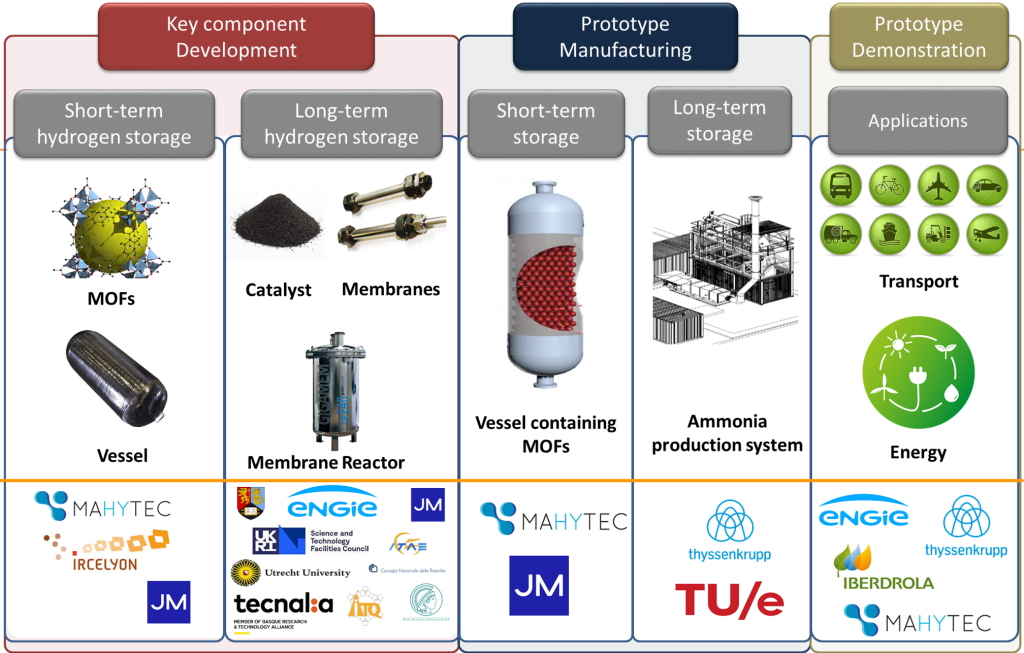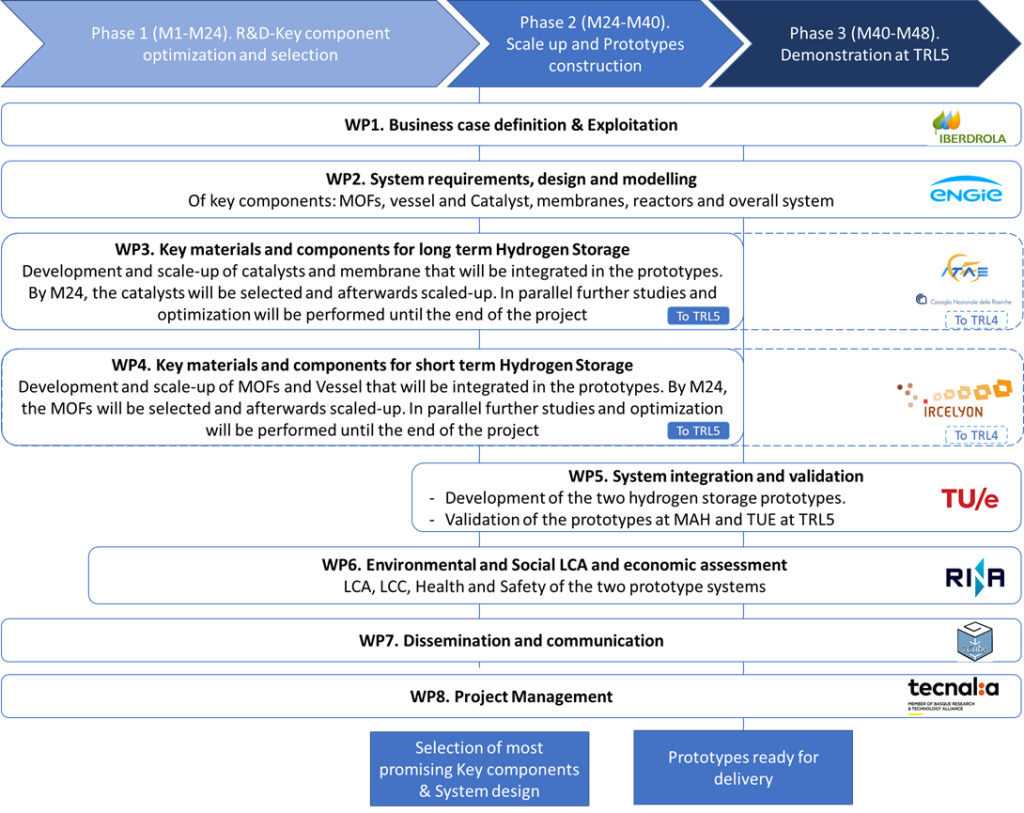The AMBHER project aims at providing a quantum leap in the development of hydrogen storage technologies. For that purpose, it develops its main activities around ammonia synthesis for the long-term storage and around novel nanoporous Metal Organic Frameworks (MOFs) for the short-time storage (Figure 1). For long-term storage, advanced catalysts and membranes and their combination in an intensified 3D-printed periodic open cell structured reactor will be developed to allow hydrogen storage in the form of ammonia in a cost-efficient and resource effective process at lower temperatures and pressures compared to conventional systems. For short-term hydrogen storage, novel nanoporous MOFs of high surface area and low-cost synthesis will be developed following an original shaping process (3D printing). Conformable cryo-vessel to accommodate stacks of MOF bodies of tailored-made shape will be also developed. Prototypes will be manufactured in both applications and validated at TRL 5.

Scientific and technological targets
The main scientific and technical objectives on material and system level are the following:
- To design and develop a MOF container for a storage hydrogen capacity of 40 g/L at 100 bar whilst at competitive cost (600-1.000 euros/kgH2).
- To develop innovative conformable cryo-vessel operating up to 100 bars to be used in Hydrogen Refuel Station for Heavy Duty Vehicles.
- To develop innovative catalyst materials that can be used to develop a Haber-Bosch process operating at pressures below 20 bar and temperatures below 250 °C with NH3 production rates 4 times higher than conventional reactors operated at the same conditions.
- To develop innovative membranes for selective separation of ammonia during the gas phase production process with selectivities of NH3/N2 > 50 and NH3/H2 > 10.
- To design and manufacture highly conductive Periodic Open Cellular Structures with optimized heat and mass transfer and thin struts.
- To develop a full LCA, LCC and Health and Safety Analysis (HSE) of AMBHER.
- To pave the way for future exploitation of AMBHER Key Exploitable results.
Project Structure and Plan
AMBHER is clustered in 3 phases up to a validation at TRL 5 of the two different technologies (Figure 2). Phase 1, running up to M24, focusses on the research and development of the key materials/components. Phase 2, running up to M40, focusses on scaling up the selected materials/components and the construction of the two prototypes. Finally, phase three, running up to the end of the project, focusses on validating the prototypes at TRL 5. The project scheduled work plan comprises activities related to the whole value chain, and it will be implemented in 48 months. It is broken down in eight work packages.

Figure 2. Project structure and work plan
